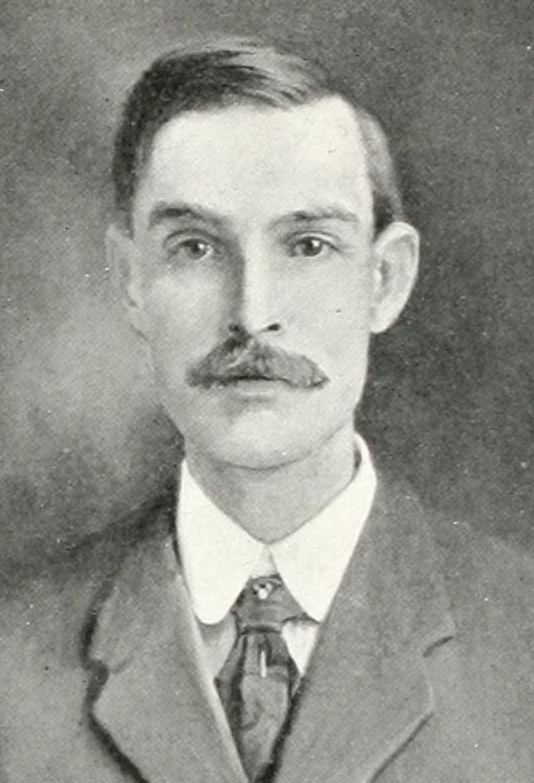Nationality American Died March 19, 1912 | Role Jr. Name Thomas Montgomery, | |
 | ||
Born March 5, 1873New York City ( 1873-03-05 ) Known for Chromosome and cell research Parents Thomas Harrison Montgomery Institution University of Pennsylvania, University of Texas at Austin | ||
Thomas Harrison Montgomery Jr. (March 5, 1873 – March 19, 1912) was an American zoologist who made important contributions to cell biology–especially in chromosomes and their roles in sex determination–as well as the biology of birds and several groups invertebrates, naming many species of ribbon worms, rotifers, and spiders. He studied in Berlin before becoming a researcher and professor at the University of Pennsylvania, where he primarily worked until his death at the age of 39. In his short career he published 80 scientific papers and two books.
Contents
Early life and family

Montgomery was born in New York City on March 5, 1873 to a wealthy Pennsylvania family. His father, Thomas Harrison Montgomery Sr., was a businessman and writer who authored several historical accounts and was president of the Insurance Company of North America from 1882 until his death in 1905. His mother, Anna Morton, was daughter of noted physician and naturalist Samuel George Morton. Thomas Sr. and Anna had nine children–six sons and three daughters–of which Thomas Jr. was the sixth born. His older brother James Alan Montgomery (1866–1949) would become a noted Oriental scholar. At the age of nine, his family moved to the countryside near West Chester, Pennsylvania, where young Thomas soon began collecting field notes and bird specimens, amassing around 250 bird skins by age 15 and 450 by 17. He graduated from the Episcopal Academy in Philadelphia in 1889.
In 1889, Montgomery enrolled in the University of Pennsylvania, where he studied for two years before a summer trip to Europe inspired him to complete his education in Germany, enrolling in the University of Berlin in 1891 and completing a PhD in 1894 at the age of 21. His thesis was primarily supervised by Franz Eilhard Schulze, who worked largely with sponges and other invertebrates.
In 1901 Montgomery married Priscilla Braislin, and they had three sons.
Career
Montgomery returned to America in early 1895 and spent three years as a researcher at the Wistar Institute in Philadelphia. During this period he spent consecutive summers working with Alexander Agassiz at his Rhode Island laboratory, the University of Pennsylvania marine laboratory at Sea Isle City, New Jersey, and at the Marine Biological Laboratory at Woods Hole, Massachusetts; the latter to which he would return nearly every summer for the rest of his life. In 1897 he joined the faculty of the University of Pennsylvania where he worked until 1903, then was professor at the University of Texas from 1903 to 1908 until returning to Pennsylvania where he worked as head of the zoology department until his death in 1912. He was a member of the American Society of Zoologists (president in 1910), American Association for the Advancement of Science, American Society of Naturalists, American Philosophical Society, Academy of Natural Sciences of Philadelphia, and the Texas Academy of Science (president in 1905). He was co-editor of the Journal of Morphology from 1908 to 1912.
Cytology
Harrison published 25 papers on cell biology, primarily using insect cells. His most notable research includes early observations of the pairing of maternal and paternal chromosomes during cell division. He was first to propose that chromosomes play the dominant role in sex determination, although he rejected the idea that sex was determined by chromosomes alone, and some historians claim he was the first to propose the chromosome theory of inheritance, an idea widely credited to Walter Sutton and Theodor Boveri. He also detailed the morphology of the nucleolus, and observed that in some hemipteran insects the germ cells of males but not females contain odd numbers of chromosomes, which is now known to influence sex-determination, A resolution of the American Society of Zoologists read after his death stated "it would be impossible to write a text-book upon the role of the chromosomes in the determination of sex without referring to his crucial labors in this field."
Worms, spiders, and other invertebrates
Montgomery's earliest papers concerned ribbon worms (phylum Nemertea), a group on which he would write 10 papers. He also published 10 papers on horsehair worms (phylum Nematomorpha) and two on rotifers.
Montgomery wrote 14 scientific articles on spiders, and he was known to keep large amounts in his laboratory and home from which he recorded observations of courtship, mating, and other behaviors. He wrote on the taxonomy of wolf spiders (family Lycosidae), lynx spiders (Oxyopidae), and nursery web spiders (Pisauridae). In a 1909 paper detailing the anatomy and development of various organs in spiders he rejected a prevalent idea at the time that arachnids evolved from Merostomata (a group including horseshoe crabs and extinct sea scorpions) adapting to a terrestrial life, and proposed instead that the aquatic lifestyle of horseshoe crabs evolved from terrestrial ancestors.
Birds, books, and other work
Montgomery's writings on birds included migration, feeding behavior of owls, and the importance of conservation. Other topics included general principles of animal classification and larval development of the red-backed salamander. His 1908 book, The Analysis of Racial Descent in Animals, described his ideas of classification. He contributed articles to Popular Science Monthly, and also published a memoir of his father in 1905.
Death
Montgomery was stricken with pneumonia on February 15, 1912, and died in a Philadelphia hospital on March 19, only a few days after his thirty-ninth birthday. The day of his death occurred on the opening day of the a celebration commemorating the centennial of Academy of Natural Sciences of Philadelphia: his final paper appeared as the first article of its centennial issue.
